
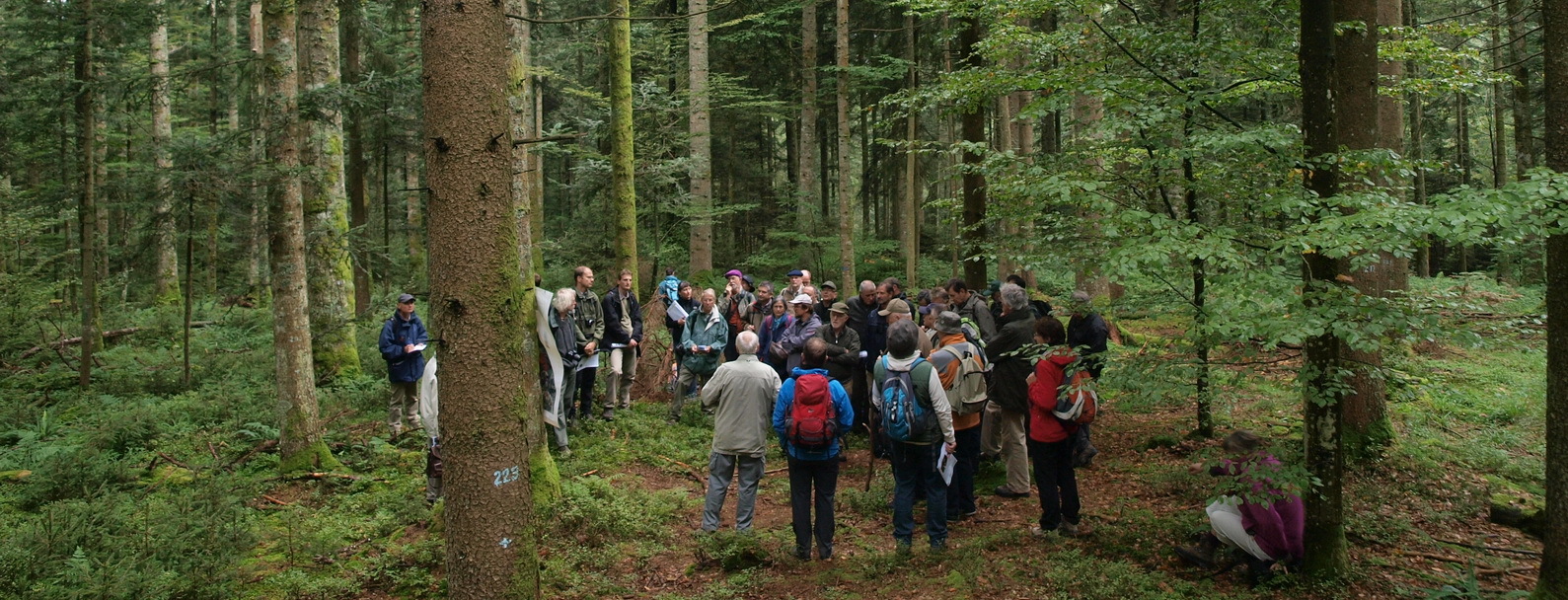


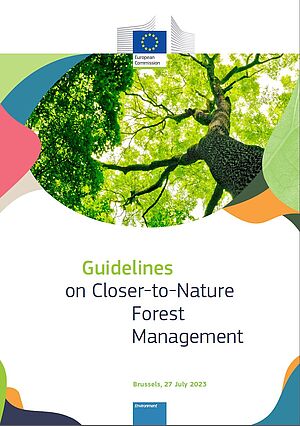
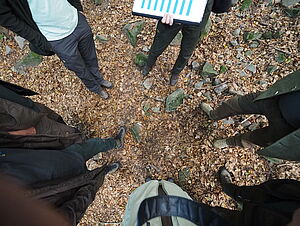
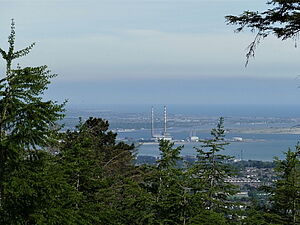
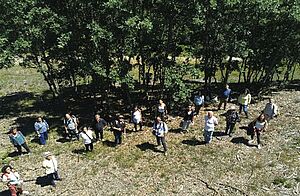
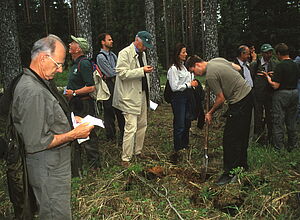
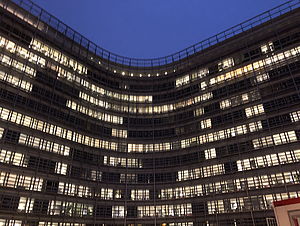
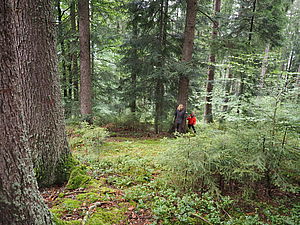
The 2014 meeting of Pro Silva Europa took place in September in Switzerland. Around 50 participants from 16 European states and a host from the USA were invited to follow a three-day programme through the forests of the Central Switzerland and the neighbouring regions.
On Thursday 11th September the start was made at the work yard of the "Green City of Zurich", which is subordinate to the civil engineering and waste disposal departments (canal and waste), but is responsible for extensive forests of the city of Zurich and adjacent private forests.
The forests have been developed from former pasture forests and looted areas in connection with various battles over the past 150 years towards near-natural forests. Today they mainly serve the recreational needs of the city population. Emil Rhyner presented several areas with precise data on the control plots in permanent forests and the aspects of deadwood and old wood islands and their long-term effects on the yield situation. In a trial area of the WSL, the trunk number curves could be compared with the model and reality. A wooden observation tower opened up the view over the forest hills near Zurich in the mild autumn sun for the conquerors, who were in good physical shape.
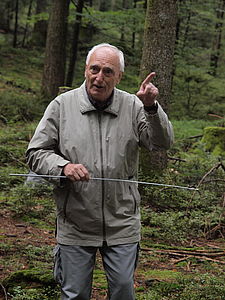
Our headquarters in the "Campus Sursee", located near the Sempachsee between Zurich and Bern, was not necessarily a forest environment as a training centre for the Swiss construction industry, but a geographically good starting point for the following days:
On Friday the 12th of September we visited the impressive Plenterwald in Oberägeri. Andreas Zink presented the data from two WSL experimental plots with spruce-fir-beech forest including Douglas firs with an upper height of 35m, where since 1983 several inventory periods can be compared using the control method. Prof. Jean-Philippe Schütz - former professor of silviculture in Zurich and chairman of Pro Silva Europe - explained the strategies for converting a high forest into permanent forest. The aim is to achieve a balanced stock and base area management on a small area with periodic use. Sawdust was nowhere to be seen.
In the afternoon Richard Stocker inspired us with his missionary lecture about forest management in the sense of the idea of permanent forest. In the Deinikon forest near Baar there are impressive specimens of maple and oak trees, next to spruce and fir. The noise of the nearby motorway bridge provided the background for a lively discussion between philosophy and facts.
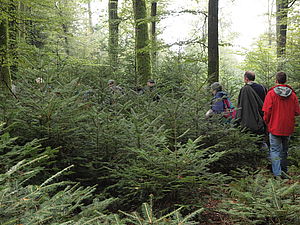
On Saturday 13th September, the tour took us to Hirschtal near Muhen, where Urs Gsell, the forester responsible for the forests of three communities (480 ha), is enthusiastically and proactively involved in involving and informing the citizens. In addition to the use of wood, he is also involved in forest festivals lasting several weeks and the construction of the "Biberburg", a wooden event centre.
The economic results require subsidies of almost 80 sFr/ha,year for the fulfilment of public tasks despite the felling of 5.600 Efm on 460 hectares. Special attention is paid to the protection and preservation of the soil, driving on the forest floor is completely avoided and work is only carried out with a cable pull and forwarder from the roads. By the way, this was the only example where the fir could rejuvenate well and with a tolerable browsing by roe deer!
The highlight was a walk through a natural forest reserve accompanied by alphorn players, a forest aperitif served by the forest apprentices and a barbecue in the Werkhof, where you can see how intensively varied wood products are offered to the population (barbecue area, camp for training, firewood, poles, stakes, bean sticks, Finnish candles).
In the afternoon the weather changed, and the autumn fog disappeared, so that we could see a control area with maple, beech and black walnut at the foot of the Jura near the town of Grenchen. Further up over a small alpine pasture area we visited a sample area according to the AFI standard with 5-yearly periodic control recordings for monitoring the "best practice" example according to economic and ecological criteria (biodiversity). Within the area there is also a "Martelloscope" area for display exercises, where each tree is registered with detailed characteristics and comparisons of the display variants can be calculated by pressing a button in the forest.
The crowning finale was an aperitif with wine from the highest vineyard in Europe from the Swiss Valais on the edge of the Jura mountains at almost 1,400m with an unobstructed view of the sunlit massifs of the Eiger, Mönch and Jungfrau - a classic finish! - Many thanks to the Swiss colleagues for the perfect organisation and the cheese fondue with cherry. The evening was rounded off at the bar in the "Baulüüt"...